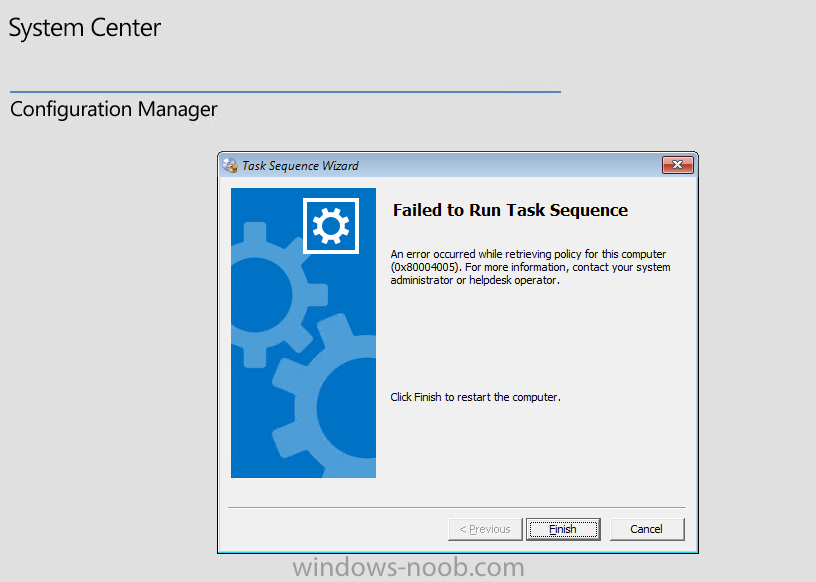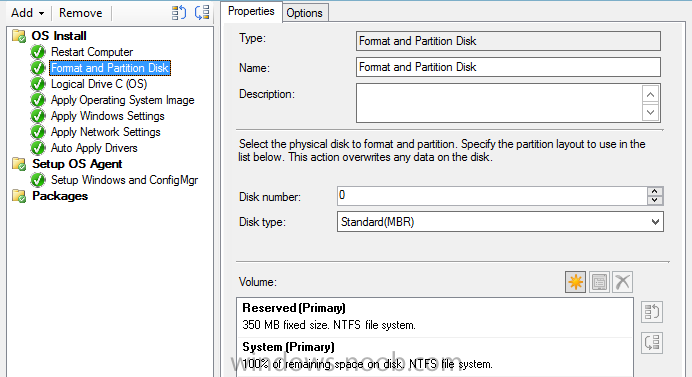
ZeZe
Established Members-
Posts
285 -
Joined
-
Last visited
-
Days Won
6
Everything posted by ZeZe
-
Virtualization?! SSD?! Let me know your experience!
ZeZe replied to ZeZe's topic in Configuration Manager 2012
Good point! Sometimes it's not possible to have lab environments... Don't ask why... sometimes ain't that simple! I'm looking for Macbook Pro! -
Hi all I need to buy a new computer... nothing special, BUT... My goal here is to run System Center tools on virtual machines - for demonstration to customers and testing/developing skills. Therefore I was wondering if someone has that experience, running virtual machines on your laptops with SSD disks and if YES, is it external or internal disk? Your inputs will be very important, since the goal here is to understand the hardware performance with real experience. Let me know your experience and how many VMs you can run at once without compromise performance of the host. Thank you all in advanced!
-
Hi My first OSD with Windows 10 (on a Virtual Machine running under Hyper-V) is not simply opening the start menu. I have tried several options that I found online, but none of them worked for me. I'll try to re-image the computer but I think it'll happen again. But would someone have any explanation to this to happen? And just to be cleared, I didn't do anything that is posted here. Just looking for a solution to this problem. Thank you in advanced!
-
Boot image x64 - error loading task sequence
ZeZe replied to ZeZe's topic in Configuration Manager 2012
Hi evreyone! Thanks for everyone support! haha The solution my problem was... 1) removed the MP 2) reinstall MP 3) remove multicast from the DP 4) enable multicast again... Here is the thing: after I finished all that, the error continue and the keys still were empty... I went to bed but before I go to sleep I went online again looking for answers. There was this case where a guy had the same issue as mine. This guy open a case on Microsoft and did what I had done already. And they wait like a few days.... and then.. puff, the problem was solved! Keys were with information needed and the OSD was running fine... so.... this morning I woke up and I check the keys and they were OK... OSD was fine too... SCCM is very slow, isn't?!?!?!?!!??! -
Boot image x64 - error loading task sequence
ZeZe replied to ZeZe's topic in Configuration Manager 2012
Hi to all, https://social.technet.microsoft.com/Forums/en-US/c8e34057-41eb-4a8f-bf1d-979257da4fa6/untrusted-certificate-during-operating-system-deployment?forum=configmanagerosd Does anyone had this issue before? Does anyone knows which values should be in these two keys? HKLM\SOFTWARE\Microsoft\SMS\Security\[signedSerilizedKey] HKLM\SOFTWARE\Microsoft\SMS\Security\[signedSerilizedKeyEx] -
Hi all I just updated a SCCM server with the CU1 (for the R2 SP1). After the update, when I try to boot with a bootable media mounted, it looks all good. I click on next to view the task sequence and it fails. This was working until I patch with CU1. From the SMSTS.log: CryptVerifySignature (hHash, pSignature, dwSizeSignature, hKey, NULL, 0), HRESULT=80090006 (e:\nts_sccm_release\sms\framework\osdmessaging\libcrypt.cpp,642) TSMBootstrap 10.11.2015 23:53:54 1920 (0x0780) CryptVerifySignature failed, 80090006 TSMBootstrap 10.11.2015 23:53:54 1920 (0x0780) VerifySignedString (sAnsiCert.getBuffer(), m_sMPCertificateSignature.c_str(), szTrustedRootKey, 32780 ), HRESULT=80090006 (e:\nts_sccm_release\sms\framework\osdmessaging\libsmsmessaging.cpp,5387) TSMBootstrap 10.11.2015 23:53:54 1920 (0x0780) untrusted certificate: 308202EF308201D7A00302010202103F2F58B02BD4A48046A24966EFD8A8C1300D06092A864886F70D01010B05003026311630140603550403130D4857494750565053434D303031310C300A06035504031303534D533020170D3135303631343231353530335A180F32313135303532323231353530335A3026311630140603550403130D4857494750565053434D303031310C300A06035504031303534D5330820122300D06092A864886F70D01010105000382010F003082010A02820101009D05AB2CF0FF2CF396D4421B7BB5200F28D74CED3F2165F0E8C008533ECD62630208DEDC707FEDE6B6F0664A51829BA6A412960996665BF6E9631903D17E60BA666C50EB1996E0A650B25A00AB09352A39C93ABA89C36951F88B92B01B0784179AEF6D740379323CE8B68E2D6B3EF18014EDDE4F8881958963A5EFA0DB578B1B02BCB64403786D8CB456C4BD2A0AC94CD87AD0AFC3EF786A2BF1B1338C75A323BC6427655BCBFEE503BD2FAD07DA6EAE95A5983B80C89C483315069B4BA34AB3BD8838CE6FB8CFDA0D67AC7C39EA650081470F8D81245425B7FA49C5720F6C3ABEE6969D998A326D2172E81C1F3D698450507A0B6D9E575D009F4412A07AB9610203010001A317301530130603551D25040C300A06082B06010401823765300D06092A864886F70D01010B0500038201010066687B1227B20D12DD2F23F3C64E3D736A525898508F8A7FF936522C6885BB7271C86F1E4F491AD4B3B0C0DB35415D6E5550451509D35CFD93FFF5CA3317618BB99D05D2D39EE3E72650F2D1D6DF627469315E229A79918FD55013525771994C46402DF79B54B6F3F2A8320D3BAC2FBFCB951F54936AE1713E217CB7712440CC8097E06FE53D48988BC93F6BA75181AABC1B8409C38C27D816A1A377CFB968D15D648B902790C48C1131529951E5BA174D58DDD88B083C120D3DD221DCAC161C3B79A410DDC01154DCCA2437A346AE5EFC85398BE650762DA13F18167C0FE40C31711C7143E44D9BA233A5B245D27ED49FA313CF1BEA2A1BC684D26002D21D8C, , 0602000000A40000525341310008000001000100C781D94CA72A91BD0315C67676BA325A9C464D0AB180223BEF2E4F5AAAC426A4B7A7F5C22FB3CCB907F8C752681917679430CDBFD9427B956A6A776C3B20712C338D93A0DDF7970056C2D39569368502897CD0E267E559DBAE2788F80698AFFE20113DDF95798868EF728BC6AC7B515F34C21E94169D8EA78B0AD49FD00B5BF3F9CEC1DD9A42AFB484AC6782F35FD3892D080B4693DA560D2FC0799DE75DD07A93940C42210EF20C417AD991E4EF3AE80598C0ABCEE3963EC4897F4F69167A2585F94383B6D625BBAD988FBE9646B8235B3FD064E735A4D5D6A0E7AFF1936DBEE02F0F729B43224F165FC7EF389F09E25920281E85B03AB534B03DDF2DCC2EB1 TSMBootstrap 10.11.2015 23:53:54 1920 (0x0780) MPKeyInformation.RequestMPKeyInformationForMedia(szTrustedRootKey), HRESULT=80090006 (e:\nts_sccm_release\sms\framework\osdmessaging\libsmsmessaging.cpp,9584) TSMBootstrap 10.11.2015 23:53:54 1920 (0x0780) Failed to get information for MP: http://SCM. 80090006. TSMBootstrap 10.11.2015 23:53:54 1920 (0x0780) ---- I have already look into the certificates and everything is "unblocked". I have created another bootable image from the task sequence media, with a long date on the certificate self-sign. The error on the screen is this: Any help will be very very appreciate!!
-
Hi to all, I'm having this exact issue. Computers change to Desktop-xxx and the renames the workstation name on the SCCM. And when I try to logon the computer after installation is finished, I have this message: The security database on this server does not have a computer account for this workstation trust relationship... The OS is Windows 10 x64, and I have the unattend file on the Task Sequence. I don't know many forums where this issue is being posted online. I didn't test this with a physical hardware but from what I read here this could be related with Virtual Machines running under Hypver-v? Or does anyone know if this is also happening with physical hardware? Thanks in advanced!
-
How can I capture an image using capture media in ConfigMgr 2012
ZeZe replied to anyweb's topic in Configuration Manager 2012
Hi, I'm running win10 64 and I have create a TS to build and capture the OS. During the build and capture, I added 3 steps to install additional software packages. All good, but when I use this WIM and deploy it to a workstation, after installed the OS no further steps are ran - like installing the SCCM agent, adding computer to domain, etc.). I am missing something here? -
Peter Thanks!! I was wondering about that and I think it's better to move to ADK 10!
-
Hi all I'm planning to upgrade a environment 2012 SP1 CU5 to SP2. I have been reading Microsoft documentation to proceed with this update but I have some doubts. I need to install Windows ADK 8.1 and currently I have 8.0. I guess this is straight forward - simply install the new version on top the of the old version and everything should be fine. But in terms of SCCM, is there anything that I should be aware? Some precautions? By the way, anyone has installed the SP2? Thanks in advanced!
-
Compliance Item - powershell script timed out?
ZeZe replied to ZeZe's topic in Configuration Manager 2012
Many thanks! p.s. Nice blog! -
how to uninstall office 2010 standard using sccm2012??
ZeZe replied to mohd.S.H's topic in Configuration Manager 2012
Create a script CMD with these lines: @for %%i in (%0\..\) do set CWD=%%~fxi REM PROGRAM cd "C:\Program Files\Common Files\Microsoft Shared\OFFICE14\Office Setup Controller\" @start /wait setup.exe /uninstall STANDARD /dll OSETUP.DLL /config %CWD%install\Standard.WW\config.xml create config.xml with: <Configuration Product="Standard"> <Display Level="none" CompletionNotice="no" SuppressModal="yes" AcceptEula="yes" /> <Setting Id="SETUP_REBOOT" Value="Never" /> </Configuration> Test it on the local environment before you deploy this package. Hope it helps! -
Hi all, I searched on the internet for a script that check's if there are any unwanted users as "administrators" on the local computer groups. I found this script, that you can change to allow your own users or groups: ----- START ---- $computer=$env:computername $AdminGroupArr = @() $AllowedGroups=@("Administrator","Domain Admins","ACCOUNT1","GROUP1","ACCOUNT3") Try { $AdminsGroup=GWMI -Class Win32_Group -computername $Computer -Filter "SID='S-1-5-32-544' AND LocalAccount='True'" -errorAction "Stop" $AdminGroup=$AdminsGroup.GetRelated() | Where {$_.__CLASS -match "Win32_UserAccount|Win32_Group"} $AdminGroupArr+=@($AdminGroup) | Select Name $admGroupOutput = $AdminGroupArr | where {$AllowedGroups -notcontains $_.Name} | ForEach-Object {$_.Name} | Out-String -Stream if ($admgroupoutput -eq $null) { write-host "Compliant!" } else {$admGroupOutput} } Catch { Write-Warning "Failed to get administrator groups from $computer" Write-Error $_ } ----- END ---- I have configured a baseline configuration with an item that will check the result (as a string) for "Compliant!". Any other output will result of non-compliant. However, when I run the script it can take some time (between 30 seconds to 180 seconds). No manner how long it works! But the SCCM agent considered that it takes a lot of time (more than 60 seconds some times), which will cause the script to fail and result "critical" event on those workstations. Is there any way to change the amount of time that a script can run? Or is there any other way to accomplish this using other script? This one works perfectly however, it's the "catch" that takes a while to finishes. Thank you in advanced for any feedback. José Additional information on the report: Setting Discovery Error 0x87d00321 The script execution has timed out.
-
Jorgen, by the way, can you share a link for a drive pack for HP as an example? thank you!
-
Many thanks Jorgen!
-
Hi all, SCCM 2012 SP1 is installed with WinPE 4.0 - which is based on a Windows 8 version for what I have read. So all the drivers that I wish to inject to this Windows boot image (x86) should be Windows 8 drivers, correct? I know that some drivers work well with both versions (windows 7 and Windows 8) but some don't! I just found that...
-
I have change the image, on the TS, and it works perfectly. I believe in something with that image. The only think I changed in the past in that image, was some schedule updates. So... maybe updates did something to the image, but I don't know... Facts: I change the image on the same TS and it works like a charm... NO clue why...





